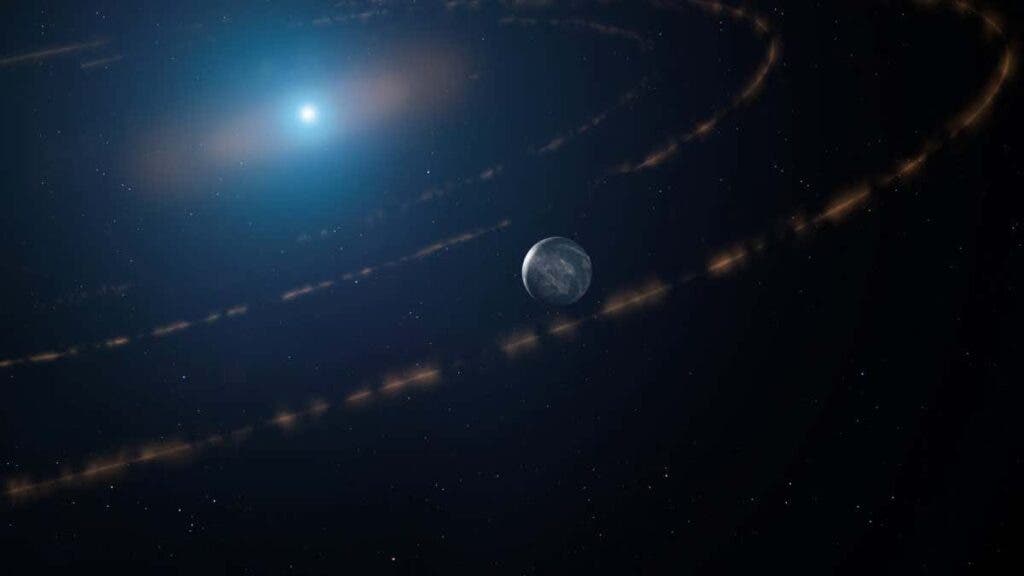A group of astronomers have identified a ring of planetary debris orbiting close to a dying star, some 117 light-years away from Earth, hinting at what could be a planet in a habitable zone where life could exist. If confirmed, it would be the first time a life-supporting world is discovered orbiting such a start, known as a “white dwarf.”

While most large stars go supernova at the end of their evolution, medium and small ones with a mass of less than eight times than the one of the Sun usually become white dwarfs. They have a similar carbon and oxygen mass despite their small size. About 97% of the stars in the Milky Way will become white dwarfs, according to a previous study.
A team of researchers measured light from a white dwarf in the Milky Way called WD1054–226 using data from ground and space-based telescopes. They noticed something appeared to be passing regularly in front of the star, causing dips in the light. The pattern repeated every 25 hours, with the biggest dip every 23 minutes.
This indicates that the star is surrounded by a ring of 65 comet-sized or moon-sized orbiting objects, evenly spaced in their orbits by the gravitational pull of a nearby planet the size of Mars or Mercury. The objects are 2.6 million kilometers from the star, putting their temperature at 50ºC – in the middle of the range for liquid water.
“An exciting possibility is that these bodies are kept in such an evenly-spaced orbital pattern because of the gravitational influence of a nearby planet. Without this influence, friction and collisions would cause the structures to disperse, losing the precise regularity that is observed,” lead author Jay Farihi said in a statement.
Tracking white dwarfs
Finding planets orbiting white dwarfs is a massive challenge for astronomers because these stars are much fainter than the main-sequence stars, such as the Sun. So far, astronomers have only last year found tentative evidence of a gas giant, like Jupiter, orbiting a white dwarf. It’s estimated to be one or two times as massive as Jupiter.
For this new study, the researchers focused on WD1054–226, a white dwarf 117 light-years away from Earth. They recorded changes in its light over 18 nights, using a high-speed camera at the observatory La Silla in Chile. They also looked at data from NASA’s Transiting Exoplanet Survey Satellite (TESS) to better interpret changes in the light.
The habitable zone where the potential planet could be located is usually referred as the Goldilocks zone, taken from the children’s fairy tale. Since the concept was introduced in the 1950s, many stars have been shown to have a Goldilocks area. The temperature from the starts have to be just right so liquid water can exist on the surface.
Compared to big stars like the Sun, the habitable zone of white dwarfs is smaller and closer to the star, as white dwarfs emit less heat. The researchers estimated that the structures observed in the orbit were enveloped by the star when it was a red giant, so they are more likely to have formed or arrived recently than having survived the birth of the start.
“The possibility of a planet in the habitable zone is exciting and also unexpected; we were not looking for this. However, it is important to keep in mind that more evidence is necessary to confirm the presence of a planet. We cannot observe the planet directly so confirmation may come by comparing computer models with further observations of the star and orbiting debris,” Farihi said.
The study was published in the journal of the Royal Astronomical Society.
Was this helpful?



